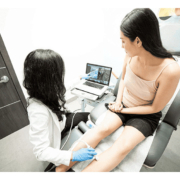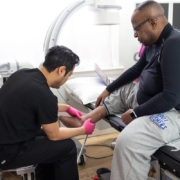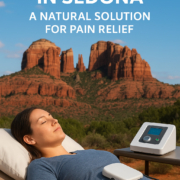What Types Of Vein Treatment Are Available In New Jersey?
Many people struggle with varicose veins and spider veins, which cause not only cosmetic concerns but also physical discomfort. If you live in New Jersey, you may be wondering about the treatment options available to you. Modern medicine has made vein care much more advanced, safe, and effective than ever before. At Vein Treatment New Jersey, patients can explore multiple minimally invasive options that target the root cause of vein disease. If you’re asking yourself, “what are the treatment options for varicose veins?” this article will guide you through the most common procedures offered today.
Understanding the Need for Vein Treatment
Varicose veins develop when the valves inside your veins stop working properly. Instead of blood flowing smoothly back to the heart, it pools in the legs, creating twisted, bulging veins. Spider veins are smaller but often signal early vein disease. While some people seek treatment purely for cosmetic reasons, many patients experience leg heaviness, swelling, itching, cramps, or pain.
Choosing Vein Treatment New Jersey ensures you receive an accurate diagnosis and the right procedure tailored to your needs. But first, let’s explore what are the treatment options for varicose veins and how they work.
Endovenous Laser Ablation (EVLA)
Endovenous Laser Ablation, also known as EVLA or EVLT, is a widely used treatment for varicose veins. During this procedure, a vein specialist inserts a tiny laser fiber into the diseased vein. The laser delivers controlled heat, sealing the vein shut so blood can reroute to healthy veins.
EVLA is minimally invasive, performed under local anesthesia, and requires no downtime. Patients at Vein Treatment New Jersey often return to work the same day. The procedure is highly effective and is often covered by insurance if symptoms are present.
Radiofrequency Ablation (RFA)
Radiofrequency Ablation works similarly to laser treatment but uses radiofrequency energy instead of laser heat. A thin catheter is placed inside the vein, and gentle heat closes the faulty vein. RFA is known for being comfortable, fast, and highly effective in treating venous insufficiency.
Many patients ask what are the treatment options for varicose veins that provide quick relief? RFA is one of the best answers. At Vein Treatment New Jersey, specialists use advanced ultrasound to guide the procedure with precision.
Sclerotherapy
Sclerotherapy is a popular choice for treating spider veins and small varicose veins. The doctor injects a special medical solution, called a sclerosant, into the vein. This irritates the vein walls, causing them to collapse and eventually fade from view.
Sclerotherapy is especially effective for cosmetic concerns. While it often requires multiple sessions, patients see noticeable improvements in the appearance of their legs. Vein Treatment New Jersey offers sclerotherapy for patients who want a non-surgical, convenient solution.
VenaSeal Closure System
Another innovative option available at Vein Treatment New Jersey is the VenaSeal closure system. Instead of heat or injections, VenaSeal uses a medical-grade adhesive to seal diseased veins. The procedure is virtually painless, doesn’t require tumescent anesthesia, and allows patients to resume daily activities immediately.
Patients who prefer a no-heat, no-needles approach often choose VenaSeal. It’s a great solution for those asking what are the treatment options for varicose veins that are minimally invasive and highly comfortable?
Ambulatory Phlebectomy
For larger bulging varicose veins that appear on the surface of the skin, ambulatory phlebectomy is an excellent treatment. The doctor makes tiny micro-incisions and removes the visible veins directly. Since these veins are superficial and not essential for circulation, removing them improves both appearance and comfort.
Vein Treatment New Jersey performs ambulatory phlebectomy under local anesthesia, so patients can walk out immediately after the procedure. Scarring is minimal, and results are long-lasting.
Compression Therapy
While minimally invasive procedures are the gold standard, compression stockings can help manage symptoms in the early stages of vein disease. They apply gentle pressure to the legs, improving blood flow and reducing swelling.
However, compression therapy doesn’t cure varicose veins; it only provides temporary relief. That’s why patients who visit Vein Treatment New Jersey often use compression therapy as a supportive measure before or after treatment.
Why Choose Vein Treatment New Jersey?
Patients searching for the best vein treatment in New Jersey need a center that combines advanced technology with personalized care. At Vein Treatment New Jersey, board-certified vein specialists use state-of-the-art methods like EVLA, RFA, sclerotherapy, and VenaSeal to treat both the medical and cosmetic aspects of vein disease.
The clinic also focuses on patient comfort and education. When you book a consultation, the team explains what are the treatment options for varicose veins based on your symptoms, vein health, and lifestyle needs.
The Benefits of Modern Vein Treatments
Compared to traditional vein stripping surgery, today’s treatments are safer, faster, and far less invasive. Most procedures take less than an hour, involve no hospital stay, and allow patients to walk immediately afterward.
If you’ve been searching for “vein treatment near me” and live in New Jersey, you’ll find that Vein Treatment New Jersey offers some of the most advanced options available. Not only will you feel relief from discomfort, but you’ll also enjoy healthier, more confident legs.
Final Thoughts
So, what are the treatment options for varicose veins? Patients in New Jersey can choose from laser ablation, radiofrequency ablation, sclerotherapy, VenaSeal, ambulatory phlebectomy, and compression therapy. Each treatment has unique advantages, and the right one depends on your individual needs.
If you’re ready to take the next step, reach out to Vein Treatment New Jersey to discuss which treatment will give you lasting results. Don’t let varicose or spider veins affect your confidence and comfort—safe, effective solutions are available today.









